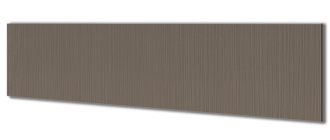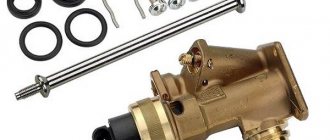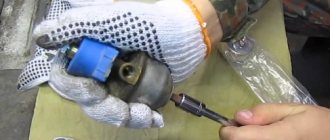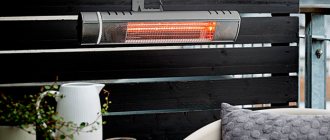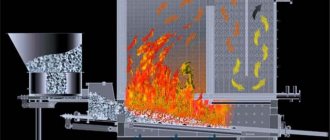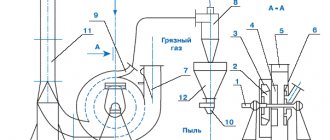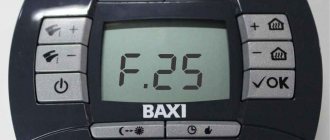Nowadays, almost all apartment buildings have heating systems - batteries. But we all know from our own experience how they work: they start the heating system in October-November, when everyone already has a cold, and turn it off exactly before the May cold snap. How can a person today ensure health and comfort for himself and his loved ones? This is why gas heaters are gradually gaining popularity in our country, since there is a wide range of these devices available on the market. Below we will dwell on the types in more detail.
Description: how a gas heater works
So, what is the filling of this interesting device? Heaters operate on various types of gas - natural or liquefied. The user can control gas consumption. The device of this heating device consists of a closed-type heating element (most often, a special ceramic panel), a 50-liter cylinder, and a housing in which the burner is actually located. Gas heater is a broad concept.
In order to understand what they are, we distinguish 3 types:
- Convector;
- Infrared oven;
- Catalytic heater.
In addition, there are luxury models on the market with a built-in fan heater. What is the operating principle of this device? Since a gas heater operates from a gas cylinder, this heating device heats the surfaces of objects, the floor, for example, but not the air around it.
That is why it is advisable to install the gas heater on a hard and as flat surface as possible, in places where there is no wind or draft.
The operation of this heating device has one interesting and useful detail - they are absolutely safe. For example, if a gas heater accidentally falls on the floor, it immediately turns off automatically. This will prevent a fire in the house or country house. In addition, if there are malfunctions in the operation of the heating device, the gas supply to it is immediately stopped. Due to the fact that the gas heater is equipped with a special piezo ignition, starting it does not require much work or effort. And finally, these heaters tend to maintain a stable temperature, so creating a comfortable atmosphere in your home is easy. A gas heater is a convenient, safe and economical device that can be placed in an apartment, country house or garage.
Types of heaters
The variety of modern heaters can amaze even a specialist in this field. However, the most popular are:
Oil-based models are considered classic heaters. Sections of these devices are characterized by a ribbed design. Externally, they are very similar to central heating radiators. In addition, they have a similar operating principle. Oil is supplied through the pipe to the heater, which transfers heat to the section. Then the oil flows back to the heating element.
Often the control panel of such a device includes only three keys. The first two are responsible for turning on a separate heating element, the third (wheel) serves as a temperature regulator. These heating elements differ in power, which allows expanding the adjustment possibilities.
The main advantages of an oil heater include:
- heating the air through convection;
- high mechanical strength;
- impeccable environmental cleanliness;
- democratic price.
The next type of work - ceramic heaters - is based on the principle of forced convection. The main feature of these devices is the material of the heating element, which is made of ceramic. A ceramic heater consists of many tiny particles through which air passes. Its main elements are the heating element itself, the fan, the blind motor, the control unit (electronic) and the control panel.
The main advantage of ceramic elements lies in the very large heat transfer area. Also, it is worth noting the almost unlimited service life, the ability to maintain the volume of oxygen in the room and high safety. Some models have the ability to ionize air.
The main component of this equipment is a quartz infrared tube. It is able to heat surrounding objects, which subsequently “throw” heat into the room. Essentially, all objects become sources of heat. Maintaining the required temperature level is carried out using a thermostat. When a specific temperature is reached, the device turns on or off.
Instructions: how to turn on a gas heater
Starting up this device is not difficult at all, and it will take no more than 5 minutes. Before operating this heating device, you must check it for any malfunctions. If any are found, you must immediately call technical support, the distributor, or call a technician to your home.
In order to turn on the gas heater, you need:
- Place the filled cylinder in the back of the housing;
- The gearbox must be screwed counterclockwise;
- Connect the valve to the gas cylinder and turn the valve one or 1.5 degrees.
To check the heater for gas leaks, flush all hose and pipe connections of the regulator and gas valve, as well as the gas cylinder valve, with a solution of cleaning agent and water (50:50 ratio).
Bubbles will begin to form at the site of the gas leak.
If this happens and a leak is detected, you must immediately turn off the gas supply (to do this by turning the cylinder valve clockwise), disconnect the regulator from the cylinder, and place the cylinder for a while in a cool, well-ventilated place outside the living space.
Construction of gas convectors
Let's consider the device of a gas convector. 1. Body. Provides device protection. Usually made of durable metal and coated with a special protective paint, which is resistant to temperature changes and protects the body from corrosion. 2. Heat exchanger. The task of this structural element is to heat the maximum amount of air as quickly as possible. For these purposes, the heat exchanger is made finned. Due to constant contact with gas, it is mounted from high-strength steel or cast iron and is also coated with high-temperature paint. 3. Gas burner. It is located inside the housing and consists of a pilot burner to which an electrode is attached to ignite the gas using a discharge. After this, the main burner is ignited. 4. Smoke exhaust system. There are open and closed types. 5.Thermostat. When the room air is heated to a predetermined temperature, the thermostat is activated and the gas supply is at the minimum level required only to maintain the desired temperature. 6. Automation system. Responsible for safety and at the first problems in the operation of the convector, it instantly turns off the device.
Different sizes of convectors
Advantages of an infrared gas stove
One type of gas heater is an infrared gas stove. The power of this device reaches 4000 W, so it is perfect for heating large areas. Among infrared ovens you can often find models with a built-in fan.
Infrared ovens differ:
- High efficiency;
- Reliability;
- Stability;
- And also durability.
The price is appropriate (in electronic stores they usually cost from 3,000 rubles). For heating a dacha, a gas heater is the ideal solution. Firstly, a gas heater is quite mobile and portable, and is relatively inexpensive. It is not always possible to provide central heating to a dacha, and a private heating system will cost a pretty penny. This is why small heating devices are so good. Secondly, gas heaters, be it an infrared oven, a catalytic gas heater or a simple gas convector, are not at all difficult to use.
Their installation and activation will take no more than 10 or 15 minutes. The instructions will be understandable even to an elderly person or a summer resident who is very far from technical issues.
Third, and perhaps the most important reason, gas heating appliances are completely safe. This makes them an ideal option for country houses where there are children or pets.
Operating principle of the device
The operating principle of the heater is very simple and is based on the basic laws of thermodynamics. All processes are explained by the design of the device.
In general terms, when describing the operating principle, the main aspects can be identified:
- The gas from the cylinder enters the reducer, where the propane pressure is reduced, after which it safely enters the heater nozzle.
- The gas is mixed with air, and the total mixture enters the ceramic panel.
- The gas burns evenly, so there are no by-products - ash, smoke, fog, carbon monoxide.
- The gas heats the ceramic element, which transfers heat through infrared radiation - glow.
The device evenly heats the air and surrounding objects, therefore it has very high efficiency. The heater can be used in an apartment, cottage, garage, tent and even outdoors. Depending on the specific application, the dimensions of the device may vary.
The gas air heater consists of the following elements:
- metal case;
- heat exchanger;
- divider;
- automatic control unit;
- gearbox
The use of heaters has a number of features. In order for the device to heat the maximum area, it must be placed high above the floor surface. Only the illuminated part of the space is heated. It is also very important to follow safety precautions during operation. This will be discussed in detail at the end of the article.
What is good about a gas convector heater?
It is necessary to choose a gas heater based on a specific purpose. Before you settle on any model, it is worth remembering the main characteristics that all gas heaters must meet.
Namely:
- The ratio of power to room area is 1 kW per 10 m2.
- There are 2 types of heating - direct and indirect. With direct fire, there is a possibility of combustion products entering the room, so you need to take care of good ventilation or simple ventilation.
- A set of adapters must be present so that different fuel sources can be connected to the device.
- There should be an automatic system that is responsible for maintaining the temperature at the same level and turning off the gas if something happens, as well as a timer.
This type of heater runs on natural (main) or liquefied (cylinder) gas. Heating of the room occurs using natural convection (internal energy that is transmitted by jets or streams, everyone knows this from a physics textbook). Convectors are capable of maintaining a temperature in the apartment from 15 to 38 ᵒC. The heating intensity is adjusted automatically. These gas heaters are reliable, safe to use, last a long time and are relatively inexpensive.
Repair of gas-powered equipment and expected breakdowns
When operating equipment that runs on gas, its repair may be useful. Repair of equipment that runs on gas is necessary for the following key reasons:
Regulatory requirements for the premises for installing a gas-fired boiler.
- Defect during manufacturing.
- Incorrect installation process.
- Daily use is not prepared correctly.
- Blockages in the supply ventilation or flue.
- Voltage drops that prevent the piezoelectric element from working.
- The gas supply is carried out, but the burners do not light.
- Automatic shutdown of equipment, which occurs quickly after turning it on.
- When using a gas type device, a bad odor occurs.
Similar breakdowns of these devices occur due to various reasons. For example, in a case where gas is supplied, but the flame does not burn, the cause of the breakdown may be the supply of low-quality gas. The basis for turning off the heater may be carbon dioxide, or rather, its increased content. The aroma of gas can mainly indicate the end of gas in the cylinder. Sometimes it’s about a broken panel.
If there is an orange flame in the burners, it is necessary to check the analyzer and its openings. During operation they can become clogged.
Without outside help, you can only change cylinders after refilling them. Also tightening the clamps and adjusting the flame power jets. All other types of work to eliminate breakdowns of gas appliances must be performed by specialists with special training and skills. They must have a document to carry out such work, which is classified as risky.
The document is provided only after completing special training. This preparation will make it possible to find the real cause of the breakdown. An oversight in such a matter leads to quite serious consequences. Among them are suffocation, fire or explosion. Calling experts for verification and proposed repairs is required in the following cases:
- Malfunction of the ignition system.
- Clogging of internal heater systems.
- The bad smell does not disappear after airing the room.
At the beginning of construction work, a comprehensive inspection of the boiler should be done and any breakdowns should be found. After identifying the cause of the breakdown, a budget is collected and the cost of the work is determined.
Gas water heaters for heating systems
Based on materials from fabrika.dp.ua
How to make a catalytic heater with your own hands
The device is ridiculously simple. In order to make a primitive catalytic heater yourself, you will need a minimum. The jar will have the following functions: the body of our device, an infrared reflector, and, in addition, a vessel for alcohol.
Namely:
- Beer can;
- Kitchen shavings for washing dishes;
- And finally, medical alcohol.
You need to open the jar with scissors and put stainless steel shavings inside for the kitchen. Thread it through and then secure it. Pour alcohol inside. You can start testing. There is also another simple heater design. You will need a metal (not glass, glass - it will crack from high temperatures) vessel, 2 slightly different sized flower pots, 4 portable tablet candles, a pebble or any other small fireproof object, an ordinary lighter.
The hole at the bottom of the pot should be covered with a stone, and a pot with a larger diameter should be placed on top.
The instructions are extremely simple. First, you need to place 4 candles next to each other on the bottom of the vessel and light them. Cover with a flower pot with a smaller diameter. Do-it-yourself catalytic heater is ready.
Repair work
Repairs should begin with an external inspection of the IR heater to identify visible faults. First of all, inspect the power plug; there should be no damage or cracks on it. The plug pins of a working device do not have blackening or carbon deposits; they are firmly fixed in the body and do not loosen. The conductive cord must also show no signs of damage.
Particular attention should be paid to the area where the wire comes out of the plug body - this is where it often gets frayed
It is also necessary to carry out a visual inspection of the heater body (through the mesh) and make sure that there are no burnt or broken wires, and make sure that the heating element is intact.
IR heater lamp
The most common failures of IR heaters are failure of the heating element and thermostat. Malfunctions are eliminated by replacing burnt out parts. To correctly select the right part, you need to remove it, rewrite the number and order it online, or contact a repair service.
A burnt-out lamp (in most cases looks like a tube, length - 30 cm, diameter - 10 mm) of the heating element can be replaced independently. Replacement work begins by turning off the device from the power supply. Then, in the section of the heater where the temperature regulator is located, remove the side panel, behind which there is a power connector for the lamp. We turn it off and pick up the phone. The lamps differ from each other only in power and size, but they are powered in the standard manner - from 220 V. Therefore, there should not be any difficulties with selection. Reassembly after replacing the lamp is carried out in the reverse order.
In the event that the thermostat has burned out, the simplest solution would be to close it, and the adjustment will be carried out through a 2 kW triac regulator. This will save time on searching and purchasing parts. If the wires break, you must avoid soldering them: under the influence of high temperatures, the solder may melt. It is much more efficient and safer to use a screw connection of wires. You may also find information about connecting a thermostat useful.
Heaters have become a part of the life of modern people, so issues related to their installation, operation and repair concern many people. Today, repairing an oil heater with your own hands and restoring the functionality of other types of these devices is a very common phenomenon. This is due to the low quality of equipment offered on the current market, violation of operating rules and a number of other factors. In general, fixing a faulty heater is fairly easy. The main thing is to have a good understanding of the types of heaters, know their features and have the skills to work with a specific tool.
Using a gas heater for a summer residence
Models of heaters for summer cottages differ in price, design, assembly method and heat exchanger material (steel or cast iron). The devices heat up to 800 ᵒC, so they can heat a room up to 60 m2. Cylinders with a volume of 5 to 50 liters are accepted for refilling, and it is not difficult to refill these containers at any gas station.
You need to decide exactly how you need to heat the country house - regularly or occasionally.
If heating is required constantly for a long time (for example, the entire summer season), you should choose something economical, such as gas convectors. But if you need to heat your house rarely, but quickly, you need to opt for something more powerful, like an infrared oven.
In this matter, the power of the gas heater is crucial. The greater the power, the more bulky, heavy and, accordingly, expensive the device. The size of the heated room also matters. If the area does not exceed 20 m2, catalytic heaters are perfect. If more, it is better to choose an infrared oven.
Home repairs
Experts are unanimous on this issue: repairing an IR heater comes down to replacing one of two main parts - either the thermostat or the heating element. This procedure is quite simple, the main thing is to have access to the necessary spare parts.
Another category of malfunctions are breakdowns associated with connecting the device to the electrical network. In such cases, the home DIYer just needs to change the plugs and/or clean the contacts.
Let's imagine that you have diagnosed a malfunction of an infrared heater and found out that the problem is in the heating element and it needs to be replaced.
The algorithm for replacing the main heating device will look like this.
- Make sure that the device is disconnected from electricity.
- The cover that covers the terminal compartment must be removed.
- Disconnect the wires connecting the terminal and the inoperative heating element.
- The same operation must be carried out with the wires going from the heating element to the indicator.
- Remove the faulty heating element and replace it with a new one.
- Connect the wires between the heating element and the indicator and insert them into the terminal.
Let's say your gas ceramic heater has failed. It is especially unpleasant when this happens exactly when you need it to work properly, that is, in the cold season. Knowing the principle of operation of the device and its design, you can fix the problem yourself.
Important: given that this heating device runs on gas, before you begin diagnosing and repairing it, you need to check for fuel leaks. This problem can be solved by replacing the cylinder or tightening the fastenings
This problem can be solved by replacing the cylinder or tightening the fasteners.
Typically, repairing this type of IR heater comes down to replacing failed plates. Sometimes the cause of the breakdown is a faulty power regulator. If you do not have experience in troubleshooting such problems, it is better to contact an authorized service center specializing in infrared heaters.
Signs of a malfunctioning carbon heater may be as follows:
- the device does not turn on;
- The power regulator does not work;
- the bulbs of the heating elements are damaged;
- The device emits an unpleasant odor, smokes, and sparks when turned on.
It is clear that in this case it is unsafe to use a carbon heater. If the device is still under warranty, then you should take it to a service center and entrust the specialists to solve this problem. Of course, you can disassemble the IR heater emitter at home in order to correct the contacts. Very often, the cause of a malfunction can be eliminated in such a simple way, because, unlike metal, carbon fiber is not subject to burnout.
As you can see, troubleshooting the IR heater looks like a completely solvable task. However, if you do not have experience in repairing similar equipment, we recommend that you do not experiment with an expensive device and turn to professionals for help.
In accordance with applicable law, the Administration disclaims any representations and warranties that may otherwise be implied and disclaims liability in relation to the Site, the Content and its use. More details: https://seberemont.ru/info/otkaz.html
Was the article helpful?
Tell your friends
How a gas heater works (video)
When using gas heaters in your dacha, be careful. Do not dry clothes or shoes on the appliance, as this may cause a fire. You should not place heaters near a shower, bathtub or hallway, since contact between water and electricity can cause a short circuit, which can have fatal consequences. It is recommended to move the gas heater only when it is turned off. Use the gas heater only in accordance with the instructions, and then it will serve well and for a long time.
Comments
0 Galina 01/31/2018 06:13 We bought this for ourselves six months ago.
There are no complaints about the work. It’s certainly not scary even in extreme cold. My husband built a gas heater for the dacha himself - it’s perfect for the dacha. Quote
0 marina 12/05/2017 06:36 With the purchase of a gas heater, the problem with heating the apartment disappeared. Very convenient and most importantly safe. It turns off automatically if it falls or there is a gas interruption. Economical and very easy to use. With piezo ignition, turning it on is not difficult. I am very happy with this purchase, because now I can heat both the garage and the dacha.
Quote
0 Anna 07/12/2017 21:04 We have such a heater, it is much more powerful than electric ones, it produces much more heat. The most important thing is to buy a heater with a timer, it makes life much easier.
Quote
Update list of comments RSS feed of comments for this entry
Wide range of different designs
Manufacturers offer a wide range of products created using modern technologies and capable of heating efficiently using gas. In supermarkets and online stores you can choose the optimal gas heater for your dacha with economical fuel consumption. When choosing, you should pay attention to the following types of devices:
Gas convector
Wall-mounted gas convector Alpine Air NGS-50
Such devices, even with continuous operation, have a plus associated with a sufficient degree of efficiency. According to user reviews, such devices are an excellent alternative to classic gas boilers. When purchasing, you need to consider the presence of two types of convectors: with a closed combustion chamber and with an open chamber type. The first type is relevant for any type of operation, and the second one will be problematic to use in residential buildings that are not equipped with a certain type of ventilation.
Catalytic gas heaters using bottled fuel (propane-butane)
The operating principle of modern devices differs significantly from traditional heating systems. An open flame in the classical sense does not form inside. The combustion process involves a ceramic tile, which is hit by a gas stream. This operating format ensures the device is silent, without reducing the efficiency of the installation and the operation is quite safe.
Ceramic gas heater from a cylinder
Ballu BIGH-55F with composite gas cylinder 24.5 l
At its core, the operation of the equipment resembles the operation of electric heaters, which heat the room thanks to a directed radiant heat flow. There is an increase in the temperature not of the surrounding air, but of objects located on the path. In this way, it is possible to more efficiently manage the thermal energy from the fuel, significantly increasing efficiency.
Gas guns using bottled gas
Cylindrical directional installations have recently become popular, the principle of which is to heat the air and move it further with fan blades. The built-in power regulator helps you set the desired flow.
Infrared radiation
Solar gas GII-2.9 infrared heater
Gas infrared heater from a cylinder is in demand. It can work not only indoors, but also outdoors, providing a comfortable environment on the open lawn, in the gazebo or in the evening on the terrace. Thanks to the IR reflector, it is possible to provide fast and high-quality heating of the selected zone.
Infrared equipment is divided into two types:
Ceramic devices, the operating temperature of which in the glow area reaches 800°C. During operation, they glow, forming a visible area around them. Starting the device with a cylinder or connected to a supply line is carried out by opening the valve. The gas flow rushes into the device, mixing with the drawn air. At the next stage, due to the divider, the gas is evenly distributed on the surface of the stove, burning.
The working area does not exceed the limit of 600°C. This mode does not provide glow. Gas also penetrates through the connected pipeline. Direct mixing with air occurs in the line to form the desired concentration. At the next stage, the composition goes into the heat-resistant tube and is oxidized there, ensuring heating of it and the walls of the emitter. When the reflector hits the reflector, thermal energy is sent to the environment.
What types of gas heaters are there?
The convenience of such equipment is explained by a large assortment of models, among which you can choose both a portable gas heater and wall-mounted lightweight structures.
Mobile convectors
All mobile units operate exclusively on a liquefied propane-butane mixture from cylinders, but have a high protection factor. The unit turns off in any of the potentially dangerous situations - a decrease in gas pressure, the heater overturning, an increase in the concentration of carbon dioxide, etc. Depending on the cost of the sample, the number of protection levels may increase.
Stationary convectors
Among this variety, there are 2 groups of products:
- non-removable models running on bottled fuel;
- non-removable models connected to the main line.
There are no critical differences between them - neither in terms of protection nor in performance. It is convenient to buy a convector with a set of nozzles for different connection methods - the cylinder runs out, switches to the main line and vice versa.
All equipment, regardless of connection method, is equipped with a chimney and has several levels of protection.
Fixed equipment can be installed on the floor (floor-mounted), ceiling (ceiling-mounted) and walls (wall-mounted samples.
Performance characteristics
When choosing a gas heater of any design, it is necessary to consider the balance between the positive and negative sides of the equipment. The convector type has the following advantages:
- compact dimensions;
- flameless heating;
- heat transfer interval 3-15 kW;
- no need for electricity supply;
- oxygen is not burned out;
- gas consumption efficiency is 0.3 kg/1 kW/h;
- you can find many budget models;
- operation is not difficult.
The disadvantages include the following parameters:
- to remove combustion products from the room, it is necessary to punch a through hole in the wall for a coaxial pipeline;
- you will have to make a hole right through for the gas main plant;
- relatively low degree of inertia, which allows you to quickly heat up and also quickly cool down when turned off.
VIDEO: Recommendations from Leroy Merlin - how to choose a heater for your home and garden
Infrared heating has the following advantages:
- a local thermal effect is formed without being distracted by the rest of the space;
- infrared gas heaters are almost twice as efficient as classic heating boilers;
- the design allows you to direct the heat flow in any direction;
- mobile units are easy to install anywhere;
- heating is felt almost immediately after starting work;
- The performance of the heater does not affect the degree of humidity and the amount of oxygen in the surrounding atmosphere.
Negative aspects are noticeable in devices used outdoors:
- periodic cleaning and calibration of equipment is required;
- service has a considerable price tag;
- there is a risk of explosion on the street.
Providing protection
In order to operate gas heating equipment efficiently and efficiently for a long time, it is necessary to comply with safety standards. It is also worth purchasing installations equipped with additional protection elements and the possibility of flexible configuration.
